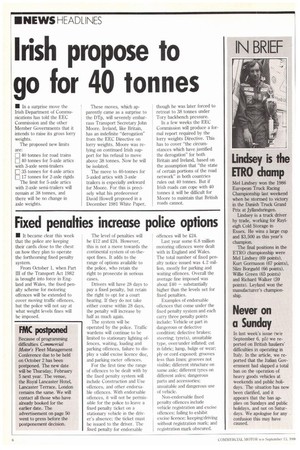, F i xe d penalties increase police options
Page 8

If you've noticed an error in this article please click here to report it so we can fix it.
• It became clear this week that the police are keeping their cards close to the chest on how they plan to operate the forthcoming fixed penalty system.
From October 1, when Part III of the Transport Act 1982 is brought into force in England and Wales, the fixed penalty scheme for motoring offences will be extended to cover moving traffic offences, but the police will not say at what weight levels fines will be imposed. The level of penalties will be £12 and £24. However, this is not a move towards the continental system of on-thespot fines. It adds to the range of options available to the police, who retain the right to prosecute in serious cases.
Drivers will have 28 days to pay a fixed penalty, but retain the right to opt for a court hearing. If they do not take either course within 28 days, the penalty will increase by half as much again.
The system will be operated by the police. Traffic wardens will continue to be limited to stationary lighting offences, waiting, loading and parking offences, failure to display a valid excise licence disc, and parking meter offences.
For the first time the range of offences to be dealt with by the fixed penalty system will include Construction and Use offences, and other endorsable offences. With endorsable offences, it will not be permissible for the police to leave a fixed penalty ticket on a stationary vehicle in the driver's absence; the ticket must be issued to the driver. The fixed penalty for endorsable offences will be £24.
Last year some 6.8 million motoring offences were dealt with in England and Wales. The total number of fixed penalty notice issued was 4.2 million, mostly for parking and waiting offences. Overall the average fine imposed was about £40 — substantially higher than the levels set for fixed penalties.
Examples of endorsable offences that come under the fixed penalty system and each carry three penalty points include: Vehicle or part in dangerous or defective condition; defective brakes; steering; tyre(s), unsuitable type, over/under inflated; cut in fabric; lump, bulge or wear; ply or cord exposed; grooves less than lmm; grooves not visible; different structure on same axle; different tyres on different axles; dangerous parts and accessories; unsuitable and dangerous use of vehicle.
Non-endorsable fixed penalty offences include vehicle registration and excise offences; failing to exhibit excise licence; keeping/driving without registration mark; and registration mark obscured.




























































































